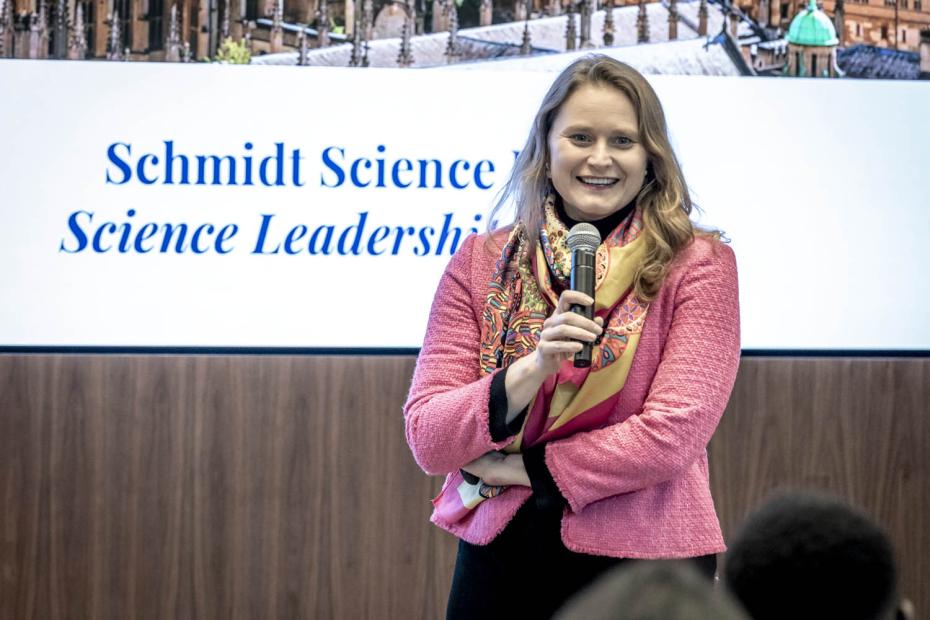
Developing interdisciplinary courses for tomorrow’s scholars
Many universities are developing new interdisciplinary degree programmes to prepare students for working across sectors on complex issues. But how can we engage faculty in this whole-institution approach?
Interdisciplinarity
Sponsored by

Advice for bringing together multiple academic disciplines into one project or approach, examples of interdisciplinary collaboration done well and how to put interdisciplinarity into practice in research, teaching, leadership and impact
Interdisciplinarity was reportedly first conceived in the 1930s when it appeared in a notice about the development of the Social Science Research Council in The Journal of Educational Sociology. Nearly a century on, we are still grappling with how best to design interdisciplinary courses.
In our increasingly complex world, students need to be able to work across, between and with multiple disciplines to tackle global challenges, from the climate crisis to increasing inequalities. In response, many of our institutions are developing new degree programmes and building and repurposing to make new learning spaces. But how does this work in practice?
UCL’s new campus, UCL East, serves as an interesting case study for developing an institutional approach to launching interdisciplinary courses. After multiple consultations, evaluations, market research and the kind of scrutiny that pertains to any large-scale university investment, nearly 60 new and nearly new degree programmes were born.
Focus on academic leadership: UCL East’s ground-up approach
One driver of success has been the conception of the new campus as academically led from the outset. Faculties were invited to submit proposals on research activities, centres and degree programmes, alongside the focus on developing new learning spaces.
Use engagement with research as a driver for course innovation
Using research as a driver for the creation of new courses works well to engage academics. It can allow their passion for their subject area to shine through, creating dynamism and energy to drive forward programme development. There will always be some academics who are adamant that their idea for a programme is absolutely what is needed right here, right now. It is important, however, to strike a balance between the innovation that comes with interdisciplinary drivers and risk-taking. This can be done by taking a holistic view of new programmes and considering them from multiple perspectives. For example, testing early ideas with existing students, seeking input from potential employers and exploring what competitors are doing.
- Resources for higher education professionals on Interdisciplinarity
- Campus webinar: the evolution and innovation of interdisciplinarity
- Practical strategies for overcoming challenges in interdisciplinary project-based learning
Mitigate your risks
Using research as a driver in the creation of new courses is no easy feat. It involves the kinds of risks associated with what Paul Coyle and Dave Roberts called Type B Courses, a new programme introduced by a university that is innovative and thus has few if any directly competitive courses across the UK sector. In contrast, Type A Courses are programmes introduced by a university that are new to the institution but are widely available across the UK sector.
Programmes that fall into the first category often face more challenges in their development journey, so it is useful to understand this at the beginning of the process so the risks can be mitigated to some extent – or at least anticipated. For example, a new interdisciplinary programme operating in a new subject area might benefit from running some pilot modules or taster sessions so that ideas can be tested and socialised before the programme is launched. This can reassure senior management that this programme is a risk worth taking, but also begins to develop interest and gives the opportunity to refine what is planned. Key to decision-making is having embedded and empowered academic leadership throughout the programme. In practice, engaging academics also means enabling different versions of interdisciplinarity to develop and navigate some of the tensions that may surface.
Encourage collaborative course design
By using our interdisciplinary research power as a driver for new courses, UCL, like other universities with large-scale research activity, can encompass a diverse integration of ideas and discourse that is inherently interdisciplinary. A key component of this research-based course design is to draw on and encourage existing collaborations between faculties, departments and disciplines.
It is also important to work with what your institution already does really well and build on this for course development. Ultimately, students need to take ownership of the interdisciplinary approaches for themselves, but this cannot happen if the connections are too abstract. This is especially true for undergraduate degrees.
Holding creative workshops where potential cross-departmental teams can work together on the vision for a programme early on in the developmental process works well, especially when the focus is on the hearts and minds of interdisciplinary students. Often, this kind of gathering results in thematic strands in a course, but also the development of additional modules whose sole intention is to help students connect the ideas across a year of study.
Lastly, we’ve also found that it is important that the role of new programme development does not exist in a vacuum and that departments are encouraged to develop modules that many students across a programme might share. This also offers an alternative approach to institutions that are not building new campuses or making major additions to their portfolios. A number of universities now have shared modules in which students from across many disciplines can come together around shared themes such as sustainability, entrepreneurship and community-based learning. Examples are Manchester’s University College for Interdisciplinary Learning and Leeds University's “discovery modules”.
This is the first in a two-part series on embedding interdisciplinarity into teaching and learning. Part two of this resource will focus on practical approaches to interdisciplinary course design.
Anne Preston is an associate professor in interdisciplinary practice and media communities and Katherine Fletcher is interim director of academic strategy development at University College London.
If you would like advice and insight from academics and university staff delivered direct to your inbox each week, sign up for the Campus newsletter.
Interdisciplinarity
Sponsored by


